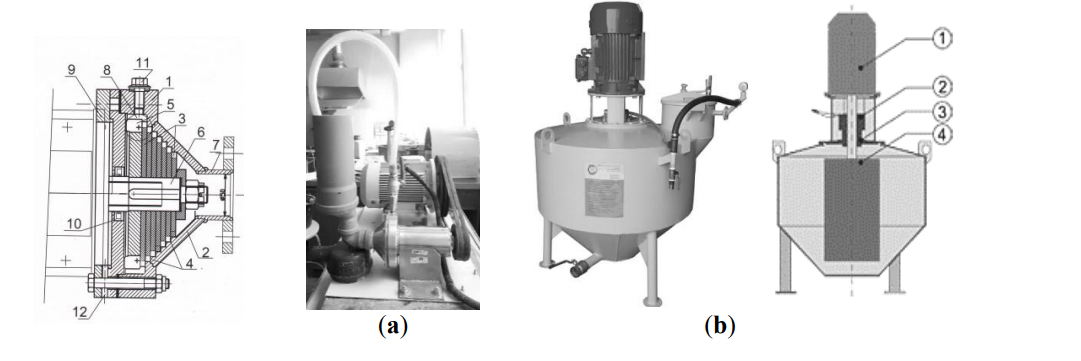In the recently published ‘Investigations on the foam concrete production techniques suitable for 3D printing with foam concrete,’ authors V. Markin, G. Sahmenko, V.N. Nerella, M. Nather, and V. Mechtcherine explore more about progressive materials for construction. Concrete has been studied in many research labs and by manufacturers around the world as they strive to use construction materials more efficiently with new technologies like 3D printing.
In this research, the authors studied foam concrete created with a mixed foaming method in turbulence, as well as a mixed foaming method created in a cavitation disintegrator. With the addition of 3D printing, industrials users are now able to look forward to better efficiency in production as well as affordability. As the researchers remind us though, 3D printing within the construction industry is still ‘in the early stages.’
Automation is now much more available with robotics, but with that comes new requirements for safety and compliance. Rheological requirements can be challenging too. There are other benefits, however, like a decrease in material weight, better thermal insulation, greater versatility, suitable mechanical properties, and more.
“The primary reason to regard foam concretes as economical and ecological materials is the presence of air cells up to 80% of their total volume,” state the researchers. “The large volume of air cells in foam concrete are often introduced by mechanical aeration of cement mortar using foaming agents.”
For pre-forming, foam and cement paste/mortar are combined to create concrete. With mixed foaming, the foaming agent is added into the matrix mixer, with all ingredients mixed there together. In this study, the team used mixed foaming with the intensive turbulence mixer and disintegrator.
“It is known that intensive mixing improves dispersion of agglomerated cement and micro-filler particles and promotes accelerated hydration processes in foam,” stated the researchers.

Different concepts of feeding system for continues foam concrete printing: (a) Concept 1: manual filling; (b) Concept 2: mixing and pumping; (c) Concept 3: pumping to integrated mixing system; (d) Concept 4: convening and fully integrated mixing system.
Type II Portland composite cement was used, with hard coal fly ash Steament H-4 as a secondary cementitious material.
Production of foam was successful following the mixed-foaming method using CD- and TM-Mixer. In analyzing the achieved densities, the researchers recognized the benefits of using the cement-based matrix but overall, methods and materials must be investigated further.
“Considering this fact, subsequent addition of the accelerator after foaming of a flowable cement-based matrix need to be explored to meet requirement on the consistency of printable foam concretes presented in [7]. Water absorption measurements revealed the influence of used mixers and corresponding different foaming techniques on microstructure and pore distribution of foam concretes.”
3D printing with concrete is of enormous interest to manufacturers around the world, as well as researchers. From foamed concrete panels to the use of geo-polymer concrete—to reinforcing such materials with 3D printed plastic, many industries can benefit from research and development with concrete.
What do you think of this news? Let us know your thoughts! Join the discussion of this and other 3D printing topics at 3DPrintBoard.com.

Overview of used mixers: (a) cavitation disintegrator (CD): 1. body; 2. conical lid; 3. toothed disks; 4. rectangular recess; 5. impeller; 6. shaft; 7. inlet branch pipe; 8. outlet branch pipe; 9. electric motor; 10. ferrule; 11. plug; 12. leakage opening, and (b) laboratory turbulence mixer (TM): 1. electrical engine; 2. bearing; 3. pressure compensated coupling; 4. vertical shaft.
Subscribe to Our Email Newsletter
Stay up-to-date on all the latest news from the 3D printing industry and receive information and offers from third party vendors.
You May Also Like
3D Printed Heat Spreader Could Improve Efficiency of Electronics
The low-hanging fruit for decarbonization has long been improving the efficiency of existing systems, hence the justification for LED lights and ENERGY STAR certified appliances. While such minor moves are...
3D Printing News Unpeeled: Marine Gearboxes, 3D Printed Motors and $1.7 Million in Seed Funding
UK based Equipmake just released their Ampere-220 e-axle system. The system, which is meant for high performance electric cars, was similar to one released on the Ariel HIPERCAR. It has...
CEAD Unveils 36-Meter-Long 3D Printer for Abu Dhabi’s Al Seer Marine
CEAD, a Dutch original equipment manufacturer dedicated to large-format 3D printers, has unveiled what it claims to be the world’s largest robotic arm-based 3D printer. At 36 meters long and...
3D Printed Biocomposites Could Help Reduce Marine Plastic Pollution
Concerns about the impact of plastic litter and microplastics in the oceans are at the forefront of environmental study. For decades, the marine environment has suffered from the degradation of...






































